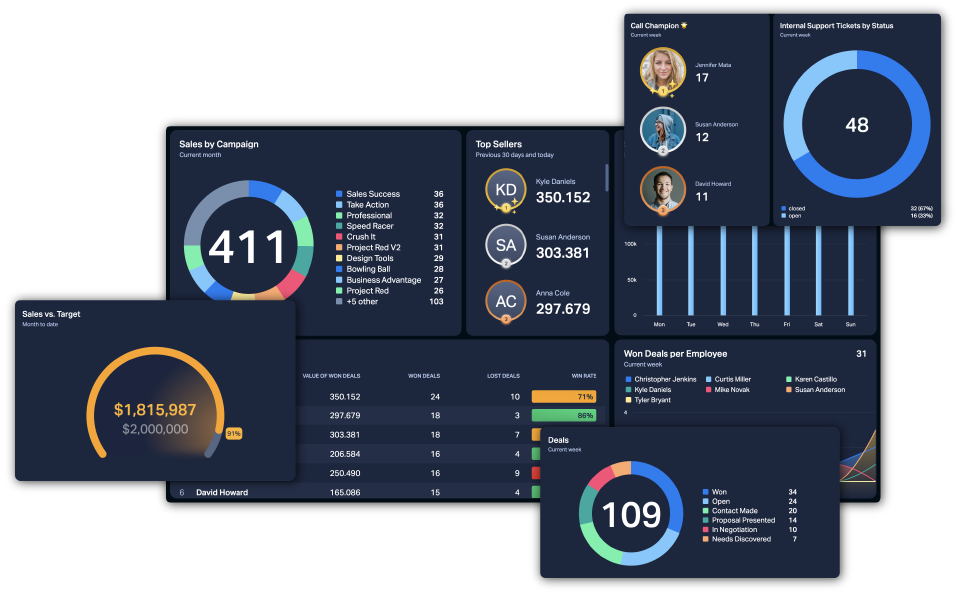What are Sales KPIs?
Key performance indicators, commonly referred to as KPIs, are what are used to measure the performance of your sales team against specific goals. KPIs for sales break down the masses of data you are presented with on a daily basis into digestible chunks, thereby making it easier to understand how individuals and the team are performing.
Used in the right way, sales KPIs will enhance your business practice, positively streamline your data management, and enable you to take action on your data.
Why are KPIs in sales important?
If you want to grow your business, beat the competition, and measure your team’s progress, then having a set of predefined sales KPIs is a must. Sales KPIs are essential for both managers and salespeople to measure progress, celebrate success, and identify areas for improvement.
Nowadays, nearly everything salespeople do can be measured, and it’s easy to get overwhelmed by the amount of data that you see daily. Therefore, it's crucial that you’re measuring KPIs that align with your business goals. Looking for some specific examples of what are KPIs in sales? Sales team KPIs can include anything from Number of Leads Created, to New MRR to Average Call Duration.
What sales KPIs should I choose?
As you probably already know, there are so many sales KPIs to choose from, meaning that selecting the KPIs you want to measure is no easy task.
It is often the case that management is more interested in different sales KPIs compared to sales reps. A sales manager may choose to focus on longer-term, strategic KPIs, often related to the businesses’ overall revenue generated and churn rates. Meanwhile, for many sales reps, it makes more sense to concentrate on tactical KPIs including win rate, hit rate and conversion rate.
When it comes to visualizing KPIs, it’s often the case that less is more. Too many sales team KPIs can be overwhelming for the sales team and result in an adverse effect.
KPIs are often industry-specific. That’s why alongside our library of prebuilt KPIs, Plecto also makes it easy to create your own custom KPIs tailored to your industry and your business.
How should I visualize my sales team KPIs?
Most sales teams use a sales CRM such as Salesforce, Pipedrive or HubSpot to keep track of their sales pipeline. In many cases, this is used alongside Excel, Google Sheets or other spreadsheet software. While many of these tools have their own visualization tools, this is often limited. Furthermore, if you are using many different systems, then it is often hard to keep track of where you can find the data for each KPI.
That’s where Plecto’s sales dashboards come in. With Plecto you can create a dashboard with an unlimited number of data sources. This means that if you are using several systems, you can visualize all your important KPIs on one screen. Plecto integrates with 100+ systems, including many of the most popular sales platforms.
Our selection of sales widgets makes it easy to build a real-time dashboard in no time. Simply choose the KPIs you want to measure and add the widgets to your dashboard.
